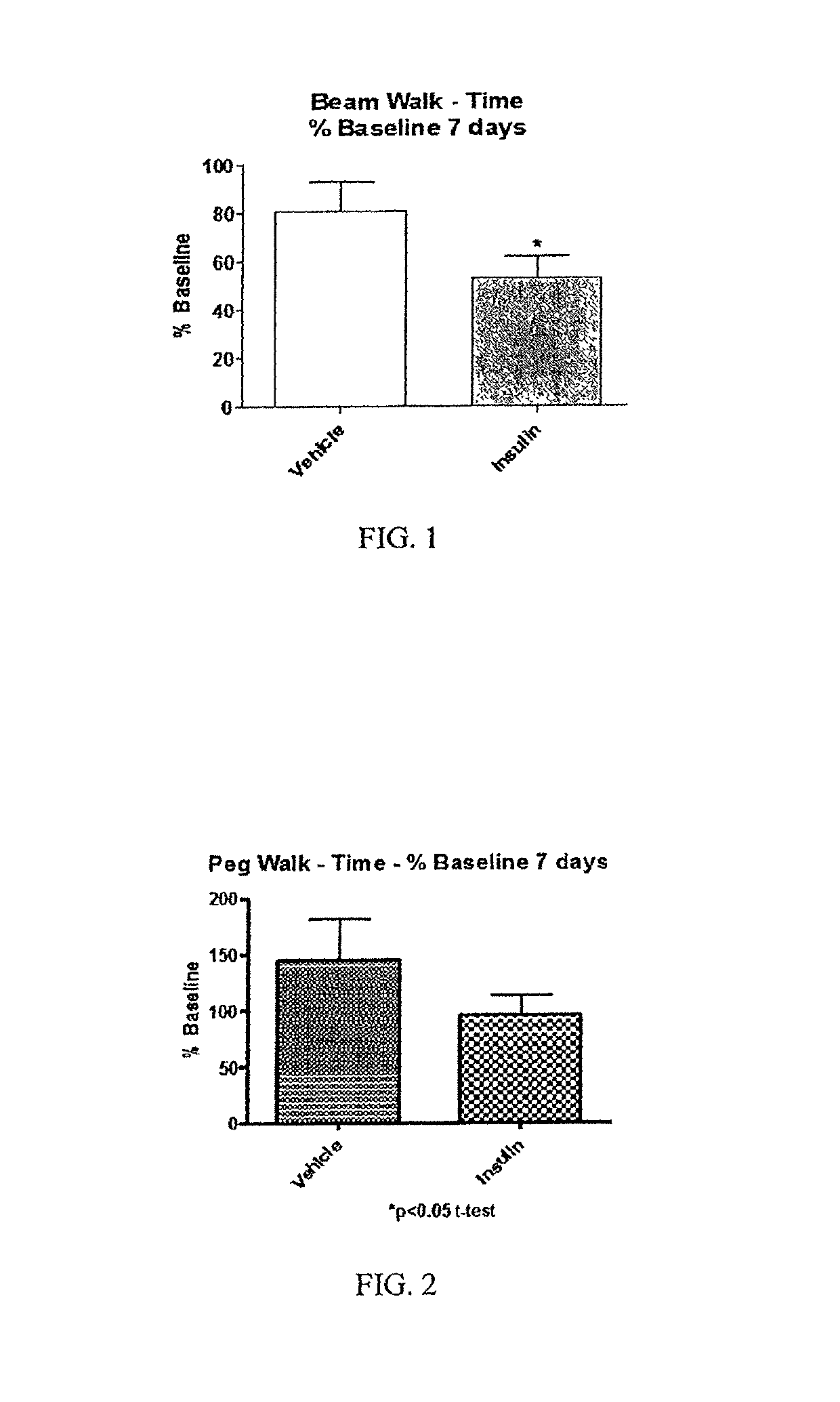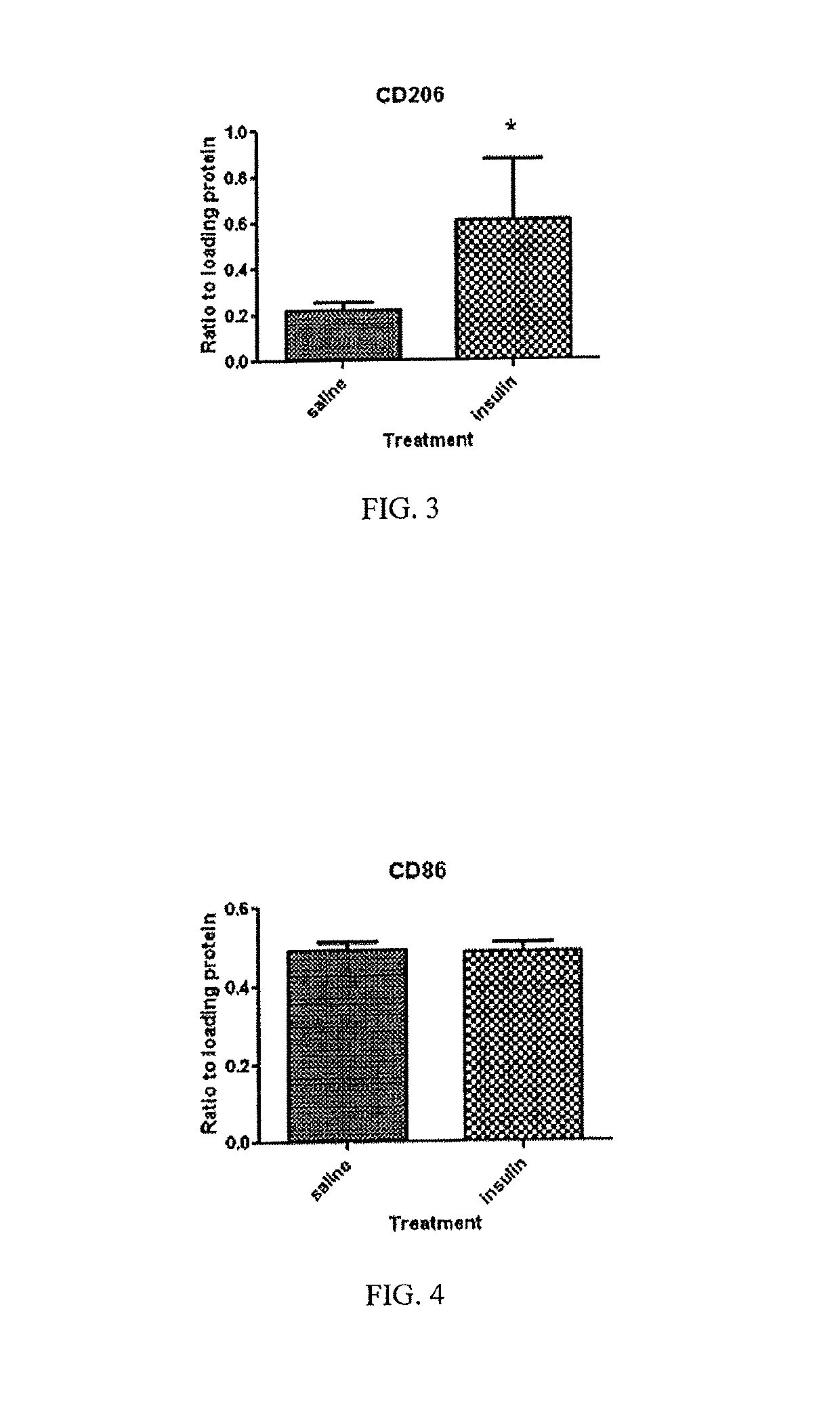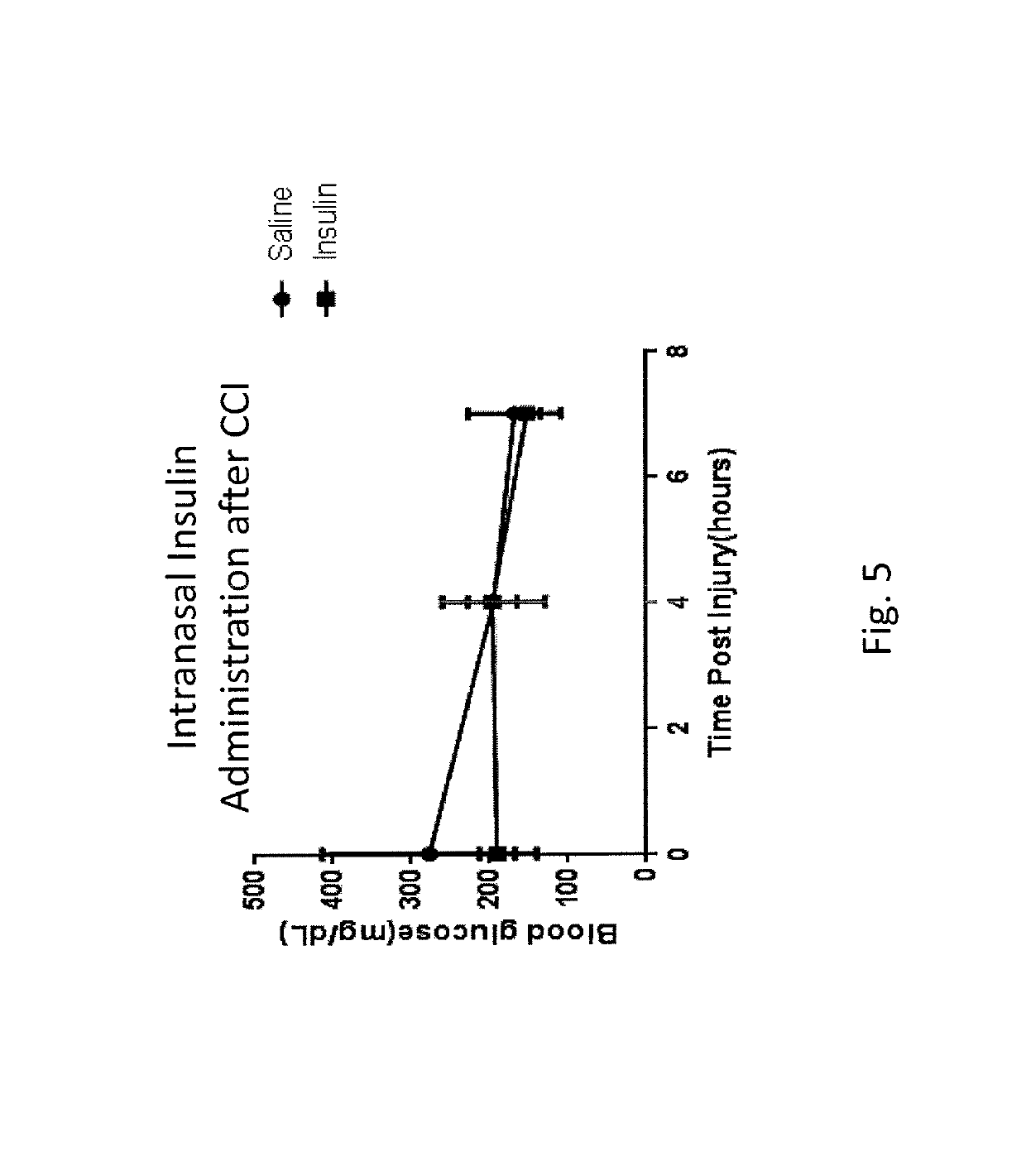Methods for protecting and treating traumatic brain injury, concussion and brain inflammation with intranasal insulin
a technology of intranasal insulin and traumatic brain injury, which is applied in the direction of hormone peptides, drug compositions, peptide/protein ingredients, etc., can solve the problems of eye pupil dilation, eye injury, and inability to awake from sleep, so as to achieve no to minimal systemic exposure
- Summary
- Abstract
- Description
- Claims
- Application Information
AI Technical Summary
Benefits of technology
Problems solved by technology
Method used
Image
Examples
working example
[0088
[0089]In a reduction to practice of one embodiment of the present invention, a Moderate Controlled Cortical Impact Injury Model, developed for use in establishing a Traumatic Brain Injury (TBI) model was employed. In this study, adult male Sprague Dawley rats were subjected to a controlled cortical impact as that procedure is described in “A mouse model of sensorimotor controlled cortical impact: characterization using longitudinal magnetic resonance imaging, behavioral assessments and histology”. Onyszchuk G, Al-Hafez B, He Y Y, Bilgen M, Berman N E, Brooks W M. J Neurosci Methods. 2007 Mar. 15; 160(2):187-96. Onyszchuk, G., et al., J. Neurosci. Methods, 2007, 160(2): p. 187-196, the contents of which are hereby incorporated by reference.
[0090]Procedure
[0091]Following the controlled injury using the TBI model described above, the injured rats received either saline or insulin under anesthesia by isoflurane. A first dose of either saline (saline rats) or insulin (insulin rats) ...
PUM
| Property | Measurement | Unit |
|---|---|---|
| weight | aaaaa | aaaaa |
| concentration | aaaaa | aaaaa |
| blood pressure | aaaaa | aaaaa |
Abstract
Description
Claims
Application Information
 Login to View More
Login to View More - R&D
- Intellectual Property
- Life Sciences
- Materials
- Tech Scout
- Unparalleled Data Quality
- Higher Quality Content
- 60% Fewer Hallucinations
Browse by: Latest US Patents, China's latest patents, Technical Efficacy Thesaurus, Application Domain, Technology Topic, Popular Technical Reports.
© 2025 PatSnap. All rights reserved.Legal|Privacy policy|Modern Slavery Act Transparency Statement|Sitemap|About US| Contact US: help@patsnap.com



